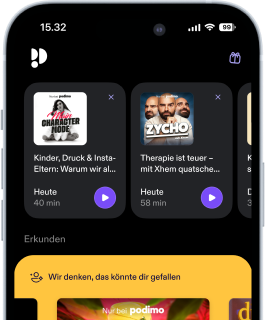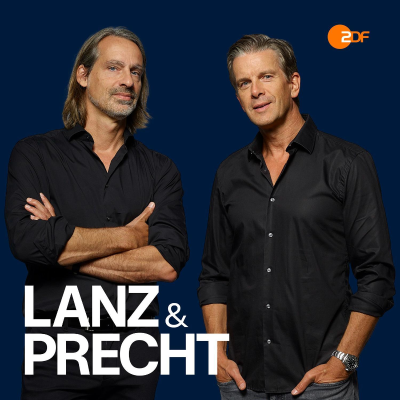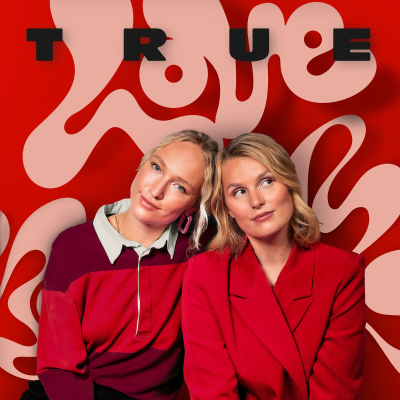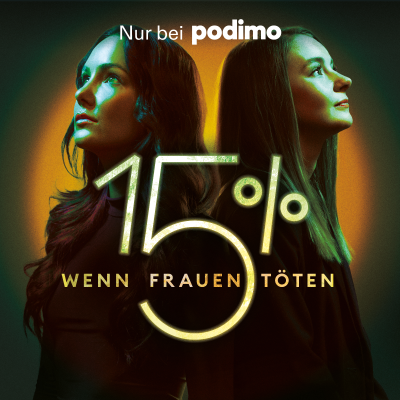
IMHO Reviews Podcast
Podcast von Vitaliy Lano
Nimm diesen Podcast mit

Mehr als 1 Million Hörer*innen
Du wirst Podimo lieben und damit bist du nicht allein
Mit 4,7 Sternen im App Store bewertet
Alle Folgen
33 FolgenIn a world where professional development often means another Zoom seminar or a static online course, the idea of a personal, on-demand coach sounds like a luxury reserved for the corner office. We've become accustomed to learning by watching, but what about learning by doing—especially when the stakes are high? Masterclass, the brand synonymous with slickly produced lessons from the world's most famous experts, has just thrown a curveball into this landscape with its new AI-powered app, "Masterclass On Call [https://medium.com/@imhoreviews/why-i-start-my-day-at-10-pm-subconscious-programming-eac513ee693c]." It promises to give you a direct line to AI versions of figures like negotiator Chris Voss, entrepreneur Mark Cuban, and even chef Gordon Ramsay to practice your most critical conversations. The concept is futuristic and bold, but does it work? We put it to the test, and the results were genuinely surprising. This comes at a time when research is challenging our assumptions about AI's limitations. A recent April 2025 study in Frontiers in Psychology found that users can build a 'working alliance' with an AI coach that is surprisingly similar to one built with a human coach. Our investigation went beyond a simple feature tour. We subscribed, dove in, and engaged the AI coaches in a series of challenging role-play scenarios. We tried to negotiate a raise with Chris Voss's AI, pitched a business idea to Mark Cuban's persona, and even navigated a difficult feedback session. We weren't just looking for clever chatbots; we were testing for genuine value. Can an AI provide nuanced feedback? Can it adapt to different conversational styles? Most importantly, can it actually help you build confidence for the real world? We asked the same strategic question to multiple AI coaches to see if we'd get diverse, valuable perspectives, and we meticulously analyzed the "instant, actionable feedback" provided after each interaction. The first surprise was the uncanny human-like quality of the interaction. While not perfect, the AI, trained on proprietary data from the instructors themselves, often responded with a level of intuition that defied our expectations of a simple script. It felt less like talking to a machine and more like a guided, reflective exercise. The second surprise was the practicality of the advice. The feedback wasn't generic fluff; the AI would pinpoint specific word choices or suggest alternative phrasing to improve clarity and impact. This aligns with extensive research on learning. A Boston Consulting Group report highlights that when psychological safety is high, employees feel 3.3 times more enabled to reach their full potential and are four times less likely to consider quitting. But perhaps the most significant surprise was the psychological power of its "stress-free sandbox." There is a unique freedom in practicing a high-stakes conversation with zero fear of embarrassment. The ability to stumble, try a radical approach, and fail without real-world consequences is a profoundly effective learning tool that traditional coaching can struggle to replicate. Of course, the experience isn't without its limitations. The AI can't read true human emotion, and it’s not a replacement for a human mentor for deep-seated career challenges. We also noted the absence of downloadable materials that are common on the main Masterclass platform [https://medium.com/@imhoreviews/masterclass-review-024aa48aa4ad]. This review breaks down our complete experience—the moments of genuine insight, the technical shortcomings, and our final verdict on who this app is truly for, and whether it's worth the investment.
Curious about Mindvalley Academy? Getting swamped by those shiny ads that promise superhuman results, happiness, or effortless wealth? Welcome to the brutally honest podcast you need: “Mindvalley Review 2025? How It Changed Life? Truth Exposed Medium Article [https://medium.com/@imhoreviews/mindvalley-review-how-it-changed-life-truth-exposed-a6cb76e5a4e9]” In this episode, I break down my five years of real, day-to-day experience as an active Mindvalley member (and serial self-improvement experimenter), cutting through the sales talk to give you simple answers. Should you buy Mindvalley membership? Do the courses deliver? Or is it just overhyped guru marketing? Here’s what you’ll get in this episode: * The Real Deal Behind Mindvalley Courses: No sugar-coating. You’ll learn how the platform works, why some people call it life-changing, why others are left disappointed, and what personally moved the needle for me—even when I rolled my eyes at some of the “out-there” course names. * Do the Instructors Actually Know Their Stuff? I’ll spotlight the top teachers—like Vishen Lakhiani, Marisa Peer, Ken Honda, Jim Kwik, Regan Hillyer, Eric Edmeades, Srikumar Rao, and Donna Eden. You’ll find out who’s hype and who has legit expertise based on results, not just reputation. * Which Mindvalley Courses Are Worth It? Whether you’re after personal growth, manifestation hacks, business skills, better parenting, nutrition, or simply want to meditate like a pro, I’ll share my absolute favorite courses that made a difference in my daily life. From the Silva Ultramind System to WildFit and Money EQ—get a quick-hit guide to what’s actually useful, and which ones you might want to skip. * The Truth About Mindvalley’s Refunds, Pricing & Hidden Fees: Is it a scam? Why do some people complain about refunds or auto-renewal? I take you through the real refund process, how to avoid bill shock, and what their money-back guarantee really means. * The Mindvalley Community and App Experience: What’s the app like? How does it stack up to other platforms? Is the global Mindvalley community actually supportive? I’ll share tips for making the most out of your membership and not getting overwhelmed. * Tips for Choosing the Right Course: Not sure where to start? I’ll give you direct advice on how to pick your first course, how to use Mindvalley’s tools (like their AI assistant EVE), and the biggest mistakes to avoid. Why listen? I’ve wasted money on weak programs before, just like you. So you’re getting advice from someone who’s tested Mindvalley as a real user, not a hype man. I’ll admit the flaws—and the powerful stuff too. You’ll get the pros and the cons, simple hacks for success, and a no-nonsense rundown on what’s genuinely life-improving versus just slick marketing. Get clear about whether Mindvalley is a fit for your journey. Tune in if: * You’re shopping for growth and wellness platforms and want the inside story, not recycled PR. * You want clear recommendations for building your mind, body, relationships, business, and wealth. * You’re tired of fake reviews and want firsthand experience, small wins, and honest warnings. Ready for the truth? Hit play and save yourself time, money, and stress. Whether you’re ready to invest in Mindvalley or just curious about all the fuss, you’ll walk away clear and empowered—maybe even inspired to try something new. Don’t forget to subscribe, share, and reach out with your questions or stories. Growth is more fun together.
Moving to a new country comes with a lot of "firsts" — first winter, first Tim Hortons addiction, and... first "how the heck are we getting to Costco without a car?" In this episode, Vitaliy and Anna unpack the reality of transportation for newcomers and locals alike, focusing on one of the smartest tools flying under the radar: car sharing in Canada [https://medium.com/@imhoreviews/canada-car-sharing-2025-whos-best-when-to-use-it-5ffc323f3845]. Right after landing in Canada, like many families, we didn’t have the budget to buy a car or the patience to deal with insurance, parking, and all the paperwork that comes with it. Public transit helped, but it didn’t cover everything — especially weekend road trips or late-night grocery runs. That’s when car sharing came into our lives… and stayed. This episode is a practical, detailed, and experience-based breakdown of how car sharing works in Canada in 2025, who the major players are (Evo, Modo, Communauto, Zipcar, Turo), and which service might fit your lifestyle. Whether you're a newcomer, a student, or just someone tired of car payments, this guide walks you through what you actually need to know — no fluff. We’ll cover: * How car sharing apps are changing the way Canadians get around * The real costs of car sharing vs. owning a car or using rentals * When it actually makes sense to use car share services * Who each major company serves best: Evo [https://medium.com/@imhoreviews/evo-car-share-everything-you-need-to-know-about-car-sharing-service-c477b61437ee], Modo [https://medium.com/@imhoreviews/modo-car-share-review-2025-the-honest-guide-to-costs-convenience-and-who-its-good-for-5065217aed87], Communauto, Zipcar, and Turo * The rules, insurance fine print, and how to avoid annoying extra fees * What to consider before ditching your personal vehicle for good Nick shares how car sharing saved his family hundreds (if not thousands) while still giving them the freedom to enjoy road trips, move furniture, or just get across town without the long wait for a bus. Anna asks the questions many people are afraid to ask — like, “Is this just for downtown hipsters?” or “Will I get scammed if I use Turo?” Spoiler: no, if you know what to look for. Whether you're planning to reduce your transportation costs, lower your environmental footprint, or just want a backup plan that doesn’t involve begging your cousin for rides, this episode gives you the no-nonsense info you need. EVO VS MODO: BEST CAR SHARE SERVICE IN VANCOUVER AND VICTORIA? [https://medium.com/@imhoreviews/evo-vs-modo-best-car-share-service-in-vancouver-and-victoria-f829177c666a] 💡 Quick comparison: Evo offers unlimited km and no membership fees, perfect for Vancouver's spontaneous drivers. Modo’s fleet variety is unmatched — ideal for families. Zipcar is Toronto’s go-to but has steeper penalties. Communauto shines in Quebec with flexible plans. Turo? It’s the Airbnb of cars — rent anything, anywhere. 🛻 Keywords included naturally: car sharing Canada 2025, Evo car share, Modo vs Zipcar, Turo Canada, Communauto rates, car sharing for newcomers in Canada, public transit alternatives, car sharing pros and cons, best car share for students 🚗 Hit play to learn how to make smarter decisions with your mobility — and maybe skip that car loan altogether.
Today, we’re talking about that all-too-familiar feeling—you know, when you’re running on caffeine, scrolling through social media, and wondering if you’re actually living or just letting life happen to you. It's like we're all on autopilot sometimes. Honestly, my brain feels like just another app running in the background. No wonder I need a reboot. Orifinal Source: IMHO Reviews [https://sites.google.com/site/videoblocksreview/online-courses/mindvalley-courses-for-self-improvement] LinkedIn [https://www.linkedin.com/pulse/best-self-improvement-courses-from-mindvalley-help-you-vitaliy-lano-u1axf] Medium [https://medium.com/@imhoreviews/best-self-improvement-courses-from-mindvalley-to-help-you-find-balance-fb4a16724551] Breathwork for Life by Niraj Naik First up is Breathwork for Life by Niraj Naik. I’ll be real—I’ve tried different breathing exercises before. Who hasn't tried to calm down with "deep breaths" that don't do much? But Niraj’s course is different. He combines ancient techniques—like the stuff monks might do—with actual science. It’s a 14-day program, just 20 minutes a day, and it's more about making your body work for you instead of against you. It’s like a shortcut to tapping into that calm state—which we could all use. Why Breathwork Matters You’re probably wondering why you should care about breathing techniques. Well, SOMA Breath, the method Niraj uses, retrains how we breathe to make life better. Not just woo-woo meditation vibes—it’s about scientifically boosting energy, sharpening focus, and kicking stress to the curb. 76% of people doing this course said they felt happier. Everyday Bliss by Paul McKenna Next, we’ve got Everyday Bliss by Paul McKenna. Paul’s known for hypnotherapy and NLP—basically, programming your brain in a good way. You know that cycle of stress, where every day feels like the same hamster wheel? This course helps you step off that wheel. It’s 21 days, 15-20 minutes a day, and instead of mindlessly scrolling social media, you’re using that time to rewire how you handle stress. The Science Behind It Chronic stress is a killer—not just for mood but literally for your health. Everyday Bliss uses techniques like Hypnotic Trance and Havening to retrain how you react to stress. Studies show stress reduces activity in the frontal lobe of the brain—the part making those good decisions you need. That’s why you’re reaching for junk food at 2 a.m. instead of sleeping. How Does It Help? Paul’s methods help relax the mind and body quickly. It’s not magic, but the Hypnotherapy Tracks have been used by corporate folks and emergency workers to stay calm. I tried the Calm Anchor exercise, and when stress hit, I reacted differently—it was like I had a tool to handle my day instead of my day handling me. Superbrain by Jim Kwik Last but not least, Superbrain by Jim Kwik. Think of this as a workout for your brain. We put effort into exercising our bodies, but our brains? Not so much. Superbrain is a 30-day program that helps boost memory, focus, and learning ability—all in about 15-20 minutes a day. Why Train Your Brain? Jim Kwik’s approach treats the brain like a muscle—exercise it, and it gets stronger. He teaches practical memory techniques, like Chain Linking and Visualization to remember names, faces, and even shopping lists. I used to forget my list at home; now, I keep everything in my head. Investing in Your Mindset Why should you care? We invest in gym memberships, diets, gadgets—but what about our minds? These courses are about giving your brain the attention it needs. If I’ve learned anything from all these experiments, it’s that investing in yourself is the best move you can make.
Upskilling and Reskilling: Stay Relevant or Risk Falling Behind By 2025, more than 50% of workers will need serious retraining. The good news? If you keep learning, you’re safe. Upskilling isn’t just about tech; it’s about problem-solving, better communication, and understanding different cultures. Original Source: IMHO Reviews [https://sites.google.com/site/videoblocksreview/freelancing/workplace-trends-2025] Tips to Stay Ahead: * Online Courses: Use platforms like Coursera or edX to learn future-proof skills like AI and digital marketing. * Soft Skills: Leadership and communication are as important as technical skills. * Industry Trends: Follow leaders and trends to spot new opportunities. * Company Training: Take advantage of any free workshops or programs your company offers. Four-Day Workweek: Less Time, More Done By 2025, many companies will experiment with a four-day workweek. Why? Because it works. 63% of job seekers already prefer it, and people are more productive with less time. How to Maximize a Four-Day Week: * Clear Goals: Break tasks into smaller steps with deadlines. * Time-Blocking: Set specific hours for each task and cut distractions. * Short Meetings: Keep them brief and stick to an agenda. Freelancing 2.0: A Serious Career Move Freelancing is no longer just a side gig. By 2025, more professionals, especially in AI, cybersecurity, and healthcare, will go freelance. Companies will rely on freelancers for skill gaps and innovation. How to Succeed as a Freelancer: * Strong Online Presence: Get on LinkedIn, Upwork, or build your own site. * Branding: Your brand matters—make sure it stands out. * Financial Management: Freelancing has ups and downs, so track your income and expenses. Hybrid Work is Here to Stay By 2028, 73% of teams will have remote workers. Hybrid work—a mix of office and remote—is the new normal, but it requires flexibility and tech-savviness. Tips for Hybrid Work Success: * Master Tech: Get comfortable with video calls, chat apps, and project management tools. * Home Office: Set up a productive workspace at home, and avoid working from your couch. * Boundaries: Stick to work hours to avoid burnout. AI Won’t Replace Us—It’s Here to Help AI is transforming the workplace, but it’s not here to steal your job. Instead, it handles repetitive tasks, freeing you up for creativity and strategic thinking. How to Work with AI: * Emotional Intelligence: Empathy and active listening are things AI can’t replicate. * Adaptability: Stay flexible and embrace new technology. * Creative Thinking: AI can’t innovate, so focus on creativity to stay relevant. VR and AR: Virtual Workspaces Are Coming By 2025, companies will use virtual and augmented reality (VR/AR) to create remote workspaces. It’s time to get familiar with this tech. Prepare for VR/AR: * Start Small: Use basic VR apps or games to get used to the experience. * Invest in Gear: If possible, get a VR headset like Oculus Quest. * Learn VR Etiquette: Treat virtual spaces with the same respect as physical ones. Wellness Is No Longer a Perk—It’s Essential By 2025, more companies will ramp up spending on mental health programs. Employee well-being, including work-life balance and mental health support, is becoming a priority. Human-Centric Leadership: Soft Skills Matter More Than Ever Leaders of the future will need more empathy, emotional intelligence, and the ability to foster inclusive teams.























